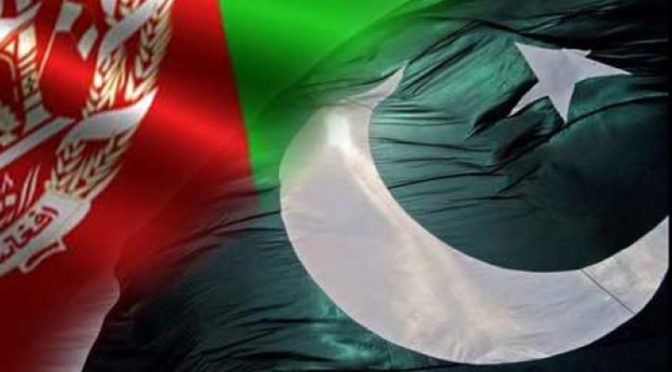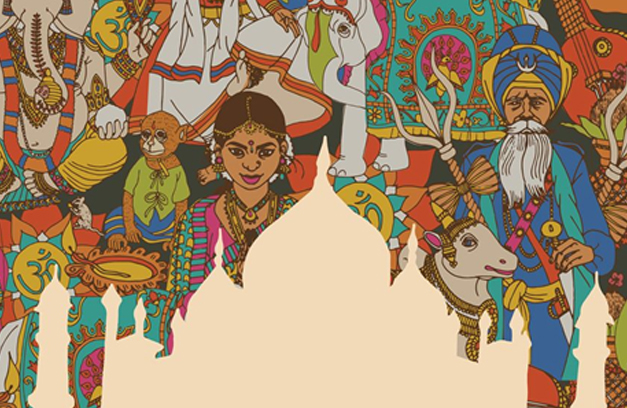Stalemate in Afghanistan?
Posted on : April 7, 2019Author : AGA Admin

Pakistan Prime Minister Imran Khan created furore in Kabul in the last week of March by suggesting the formation of an ‘interim government’ in Afghanistan before holding ‘free elections,’ noting that the current ‘Afghan government was a hurdle in peace process’.Almost everyone in Afghanistan, from civil society activists to politicians reacted negatively to what they saw as its eastern neighbour’s interferences in the internal affairs of the country. Former National Security Advisor (NSA) and Vice President Candidate of Ashraf Ghani for the upcoming presidential elections, Amrullah Saleh said in an interview that they are willing to be an ally of Islamabad, but they will never bow to them. Similarly, Hanif Atmar, a former NSA and the presidential hopeful, who in the past has supported the idea of an inclusive interim government, condemned Islamabad’s ‘wilful interference in Afghanistan’s internal affairs’.
The Afghan government, sidelined in the on-going peace process between the United States’ Special Representative Zalmay Khalilzad and the Taliban, immediately called back its Ambassador from Islamabad.As the temperature in Kabul rose, Khalilzad tweeted: ‘While Pakistan has made constructive contributions on the Afghan Peace Process, PM Khan’s comments did not. The future of Afghanistan is for Afghans, and only Afghans, to decide. The role of the international community is to encourage Afghans to come together so they can do so.’Beyond those hallowed words of the US Special Envoy, however, the fact remains that in desperation to exit from America’s longest war, the United States has undermined the authority of the Afghan government that the western forces had helped establish after driving the Taliban from Kabul in 2001.
The on-going peace talk with Taliban that Khalilzad is leading in Doha is anything but ‘Afghan led, Afghan owned’. After the marathon talks from 25 February to 12 March 2019, the US Envoy tweeted: ‘Peace requires agreement on four issues: counter-terrorism assurances, troop withdrawal, intra-Afghan dialogue, and a comprehensive ceasefire. In January talks, we “agreed in principle” on these four elements. We’re now “agreed in draft” on the first two.’He had added, ‘When the agreement in draft about a withdrawal timeline and effective counter terrorism measures is finalized, the Taliban and other Afghans, including the government, will begin intra-Afghan negotiations on a political settlement and comprehensive ceasefire.’ That did not placate the Afghan government completely who feel left out and almost in dark on the negotiation. It also did not auger well for the Afghan President who would be seeking a second term soon.
In many ways, the US has already conceded defeat to the Taliban, and has given them upper hands in its desperation to withdrawby continuing to negotiate with them without forcing them to agree to a durable ceasefire, and even more worryingly, without any representation from the elected Afghan government. In fact, the 14-member Taliban negotiating team in Doha in March included five former Guantánamo detainees, besides their Deputy Mullah Ghani Bardar (who participated for the first time in negotiation after 10 years in Pakistan detention). The veteran American diplomat went on to describe Bardar as a ‘patriot’. Taliban, it should be pointed, have always considered the Kabul government illegitimate and regarded them as ‘puppet’ of the western forces. In fact, as the negotiation continues, Taliban forces have upped the ante and attacked several military and police instalments that the US helped build, including attack on the convoy of Rashid Dostum, the notorious First Vice President on March 30, though he escaped unhurt.
In fact, current NSA and former ambassador to Washington DC Hamdullah Mohib, expressed his government’s frustrations on peace talk during his recent visit to the States, when he said that he feared ‘a deal that does not end in peace’. He even suggested that Khalilzad, the seasoned diplomat and former US ambassador to Kabul, who was born in Afghanistan, might have personal ambition of becoming a Viceroy to an interim government. Instead of listening and trying to accommodate Kabul’s apprehensions, US Government moved swiftly boycotting Mohib and imposing a travel ban on him (his wife is an American). In many ways, Mohib’s outburst, which is reflective of the Afghan government’s frustration, has angered the US more than Khan’s outlandish suggestion. The Afghan government has otherwise maintained that they support the negotiation with Taliban that the US is spearheading, although they have mostly been in the dark and are given updates only later. The Chief Executive Dr Abdullah Abdullasought to downplay the rift between Kabul and Washington DC.
Afghans are conspicuous by their absencein the negotiations increasingly making them appear like 19th century ‘great game’ between British and Russian empires when they together decided to make Afghanistan a ‘buffer’ state and dividing it through Durand Line. Afghanistan today is not same as 1980s or 1990s. However, in last 17 years, Afghanistan has made great strides in almost all walks of life from empowerment of women to developing a young but resilient and vibrant civil society and media. It will hence be difficult to ignore them completely. More than anyone else, Afghan women who were forced into the four walls of their houses during the Taliban regime fear their return. Sadly, their voices have remained unheard in the hectic rounds of negotiations.
Even the Taliban today is not the same, and they are as active in the social media and in propaganda. Many fear that in communication war at the moment, it is the Taliban that has upper hands. They are, in fact, using the opportunities that the Doha talks have offered as PR exercises as well. On March 30, President Ghani held a consultation to chart the future course of action with senior Afghan politicians, including former President Hamid Karzai, Chief Executive Dr Abdullah, Ustad Abdul Rab Rasul Sayyaf, the Second Vice President Sarwar Danish and the head of the High Peace Council Mohammad Karim Khalili before the scheduled visit of the US Special Envoy to Kabul.
The stalemate in peace talk, prolonging the crisis in Afghanistan is the collective failure of local and international actors who seem to have no consensus on what a durable peace means. A recent study by Kabul based Afghan Institute for Strategic Studies (AISS), titled ‘The Fallacy of Peace Processes in Afghanistan: The People’s Perspectives,’ listed ‘multi-dimensional, fallacious notions of peace processes in Afghanistan’, including the absence of the people, attempt at achieving peace by appeasing few groups, differences among different national and international stakeholders, and attempts at ad hoc peace agreements without paying attentions to mechanism of justice and long term peace agreements.
To begin with, different faction leaders and former warlords, often divided on ethnic lines, continue to bicker over their own narrow interests, despite the fact that for the last five years a ‘National Unity Government’ has been at the helm in Kabul. The High Peace Council, currently led by former Vice President Karim Khalili, could make little headway. Since taking over as the President, Ghani tried his best to reach out to Islamabad to convince the Taliban to come to the table. For ‘fundamental peace’ in Afghanistan, he envisioned it to be a ‘roundabout’, ‘a platform for global cooperation, not a place of contentions… (or) a battlefield for proxy wars’.
A breakthrough came when he successfully negotiated a peace deal with Gulbuddin Hekmatyar in 2016, making the latter’s return possible after a self- imposed exile for roughly 20 years. Another glimmer of hope came when both the government and the Taliban called for a temporary ceasefire during the Eid festivity in 2018 for three days, when Talibs in large numbers came out publicly in cities, rejoiced with fellow Afghans and clicked selfies with each other.
Frustration with Pakistan has been building up for years now as Islamabad had always hoped to use Afghan soil as its ‘deep state’ and have its strategic role in the formation of the government in Kabul. There is consensus among Afghan politicians that the real culprit for all troubles on the western side of Duran Line is the military establishment at Rawalpindi and the government at Islamabad who have aided and abetted different factions of Taliban and its Quetta Shura based in Peshawar.
Where does this leave India?
India is fifth largest donor to Afghanistan, and has committed over $3 billion to help rebuild the war torn country since 2001. It has helped build Kabul’s only Indira Gandhi Children Hospital, the new Parliament building, Salma Dam in Herat, a cricket stadium in Kandahar, power stations, the 218km road from Zaranj to Delaram, connecting Afghanistan to the borders of Iran for the movement of goods from Chabahar Port, among others. New Delhi also gives over 1,500 scholarships annually to Afghan students and has trained more than 3,500 Afghans in various programmes. Afghanistan, in fact, represents a victory of India’s soft power as they are seen in Karzai’s words, Afghanistan’s ‘best friend’.
Although, Afghanistan signed its first bilateral strategic pact with India in 2011, there has been little headway largely because New Delhi was apprehensive of angering Islamabad.These apprehensions were not completely unfounded since Taliban forces, allegedly at the behest of Pakistan, have attacked Indian workers employed in many of the development projects, most notably building the highway that would reduce Kabul’s reliance on Karachi airport, its Embassy in Kabul as well as consulate in Jalalabad.
After dragging its feet for several years, during 2015-16 India finally gifted four Mi-24s to the Afghan armed forces. According to reports, some of these have since been grounded as they developed technical faults and spare parts are not easily available. India has also agreed to deliver four more gunship helicopters to Afghanistan by July, this year. For aid to be effective there needs to be critical assessment of the tangible impact of this aid with regard to Afghan requirements. Moreover, in light of the constantly shifting political, security and economic spaces, New Delhi’s approach to the country as a whole, including the intended objectives of its aid and assistance programs and their actual outcomes, need to be assessed. The perception among Afghans regarding India’s contribution to Afghan reconstruction efforts is a dynamic vector that needs to be understood and taken into consideration for a more need based and impactful aid and assistance program, which could be a significant force multiplier for India-Afghanistan strategic partnership.
As the NATO and western powers decided to negotiate with the ‘Good Taliban’, New Delhi, maintained that it did not distinguish between the ‘good’ and ‘bad’ Taliban. In peace negotiations, consequently,New Delhi often found itself in dark like Kabul. Afghanistan’s neighbours like Iran, and increasingly now Uzbekistan seems to be more active and visible in negotiations than India. India however, did send two seasoned diplomats—former High Commissioner to Pakistan TCA Raghavan and former Ambassador to Afghanistan Amar Sinha — to the ‘Moscow process’, a separate informal meeting of several Afghan politicians with Taliban representatives in November 2018 as observers in ‘non-official’ capacity.
Commenting on this Diplomatic Affairs Editor of The Hindu, Suhasini Haider wrote: ‘As international talks with the Taliban leadership gain momentum, India’s foreign policy establishment has gone through the five stages of grief: denial, anger, bargaining, depression and acceptance.’ She added, ‘Defeatism or a lack of ambition for the India-Afghanistan relationship at this juncture would be much more detrimental to India’s interests than anything the Taliban’s return to Afghanistan’s political centre stage can do.’
M Reyaz
(The views expressed in the article belong to the author and do not reflect the position of Asia in Global Affairs)





Leave a Reply